Post-pandemic, big city K-12 leaders are doing everything they can to strengthen their schools and meet student needs. However, the districts they lead are tapped out in terms of teacher and administrator capability, dollars, and political support.
Urban school districts need to:
- Make school more engaging for students
- Flex to meet the needs of students who are far behind after the pandemic
- Make teaching more attractive
- Give students coherent learning experiences despite teacher absenteeism
- Adapt to declines in enrollment and funding
- Help students link to jobs and the new economy
- Try out new ideas, reproduce successes, and abandon failures
However, the regulations, labor contracts, and mindsets that structure big city public schools make needed adaptations impossible. School districts can’t both meet post-pandemic needs while continuing on as they have for decades.
Districts Need and Have a Way Out
School chartering opens up new possibilities. Forty-six states allow districts to sponsor schools with new approaches to teaching, student grouping, teacher work rules, hiring, technology use, and partnerships with employers and higher education.
In the early 2000s, when chartering was new, many districts saw it as an opportunity. New York City, Chicago, Los Angeles, Baltimore, Boston, Denver, Oakland, and New Orleans. Schools chartered for these cities have delivered in terms of test scores, enhanced enrollment, high school graduation rates, and the development of new sources of teachers. Cities saw real gains, particularly for low-income and minoritized students.
Districts Abandoned Chartering
In 2017, many districts started to back away from chartering as they began to accept a partisan framing. School boards in every city but New Orleans, fearing district enrollment and revenue losses, clamped down on existing charters and resisted new ones.
Schools chartered to serve students in large cities didn’t change, but the narrative about them did. Like the blind man holding the elephant’s tail, district leaders came to believe chartering was a snake. Some of the districts that used chartering to meet student needs (e.g., Chicago and Los Angeles) are now trying to decrease the number of charter schools they have and prevent the emergence of more.
What Chartering Still Offers
Chartering is a way out of the hole that districts find themselves in. But using it requires treating chartering as a resource, not a threat.
Big-city charter schools typically offer conventional instruction in quiet, studious environments. Others follow well-known school designs that families like, but districts and unions often don’t—for example, E.D. Hirsch’s Core Knowledge Schools. New charter schools can faithfully implement a school design because they can recruit teachers who are comfortable with it.
Existing charters can also deliver new approaches to teaching more faithfully than district-run schools, which must struggle against a thicket of state, district, and collective bargaining constraints. Chartered schools make their own decisions about teacher training, technology purchases, and partnerships with employers and local colleges. Unlike district-run schools, which use all their money to employ a fixed set of teachers and deliver only what those individuals can teach, charter schools can readily mix and match inside and outside resources.
Struggling districts like Chicago could reverse course and once again use chartering to provide options that students need but can’t get. They could again issue RFPs for new schools offering personalized approaches and new learning pathways.
Other Alternatives Are Useful—But Not Enough
What if districts remain frozen in place? Assuming districts will not rise to the post-pandemic challenge, some propose bypassing them entirely in favor of state tuition grants given directly to parents via vouchers or education savings accounts. These eliminate stifling regulations, but they face long odds in helping families that need quality options the most. Evidence suggests that existing high-quality private schools might add a few seats (or, in some cases, capture the available money by raising tuition), but new schools of that quality will be scarce. Microschools and other innovative options that target students with unique needs are emerging in states that offer private scholarships, but exclusionary practices will also thrive. Some students will benefit, but many families could spend their vouchers and return to the state for an education.
Or, as Robin Lake and her colleagues have proposed, statewide school districts could charter schools anywhere:
“These entities could be dedicated to designing bold new visions of what public education can be and working with schools and communities to design local solutions. They could create space and flexibility for innovations to flourish while safeguarding students and protecting the public interest. Statewide districts would be freed from some rules that traditionally constrain schools, like seat-time or traditional graduation requirements. They would take responsibility for identifying problems and needs, leading efforts to design new solutions, testing those solutions, analyzing results, and elevating promising approaches so other school systems could learn from them."
States could also eliminate recently imposed caps on the number of charter schools allowed and roll back regulatory creep, thereby giving new life to non-district authorizers designated by state law (e.g., colleges, universities, and metropolitan governments). These authorizers could encourage groups of educators to start new schools in places where districts are too hamstrung to provide needed alternatives.
These ideas all have promise, but for now, they are best used in combination with school districts that regard chartering as a power to be exercised. Districts alone are responsible for educating all the children in a geographic area and have the authority, if not always the ability, to determine whether a combination of school openings and closings and changes in attendance patterns could result in better student outcomes. The key oversight function is missing if districts have no connection to schools authorized and funded by other entities.
Whatever other entities do, school districts need to get out of their own way. If school district leaders revisit the narrative that chartering is a threat to public education, they might see a different story—that charters are a valuable resource worth implementing.





